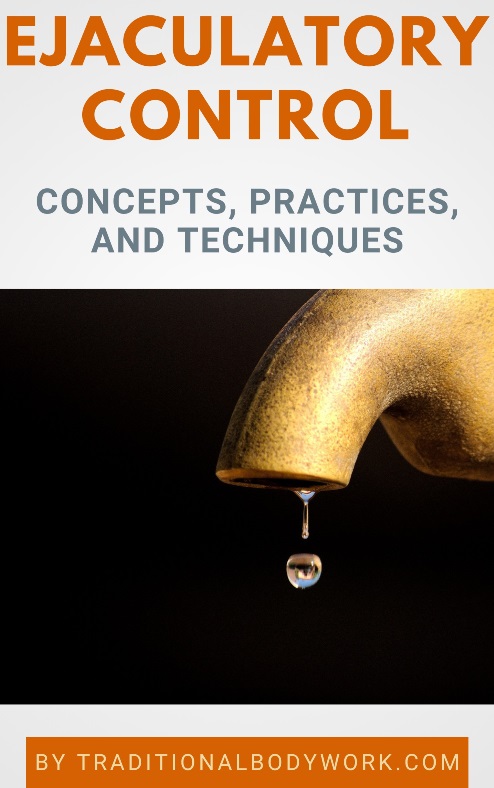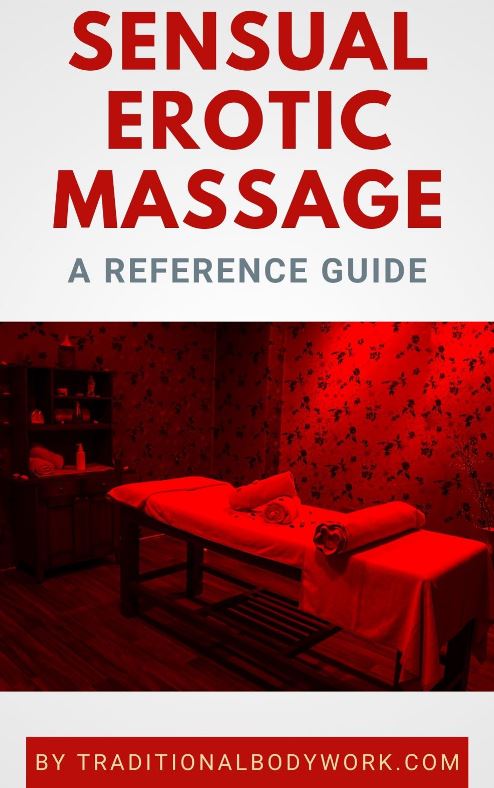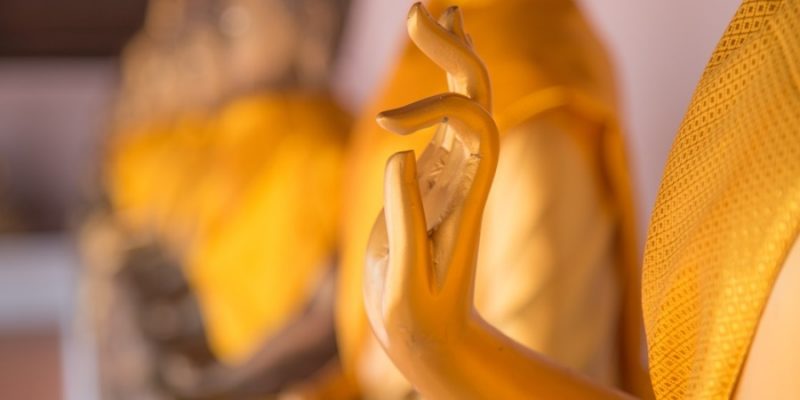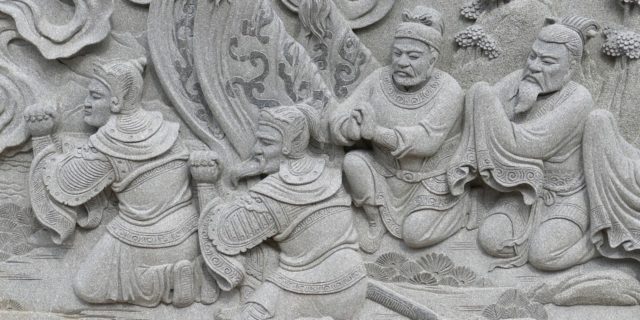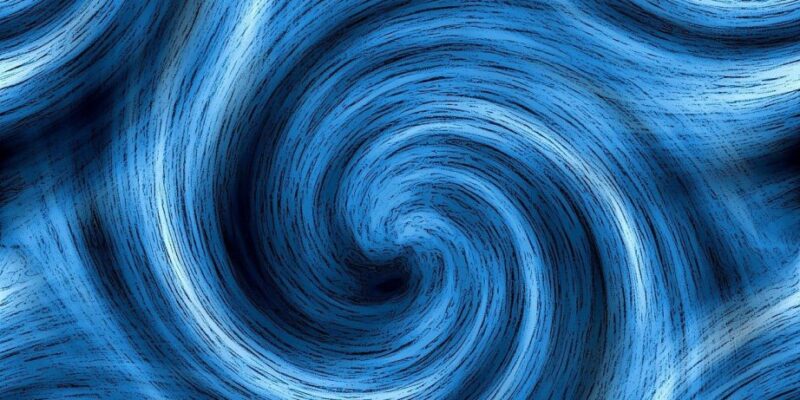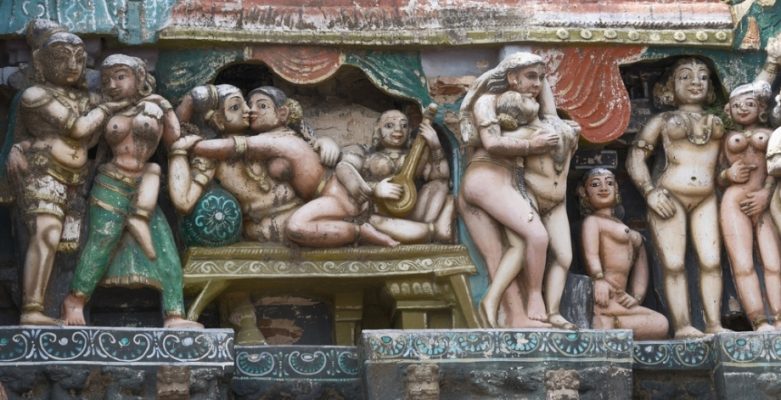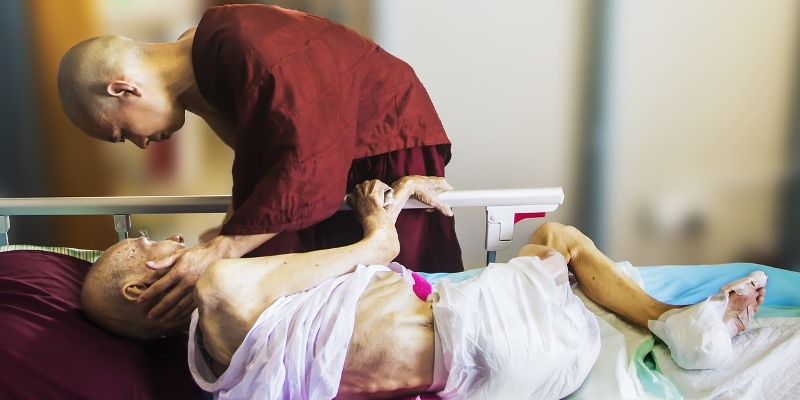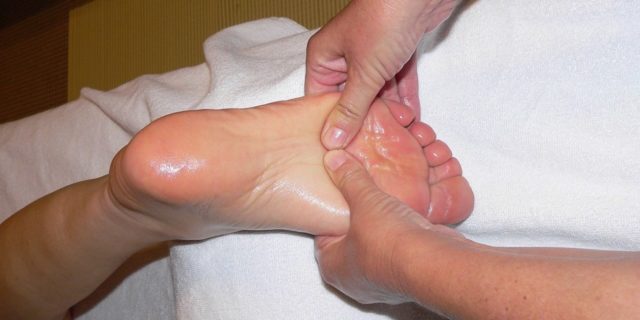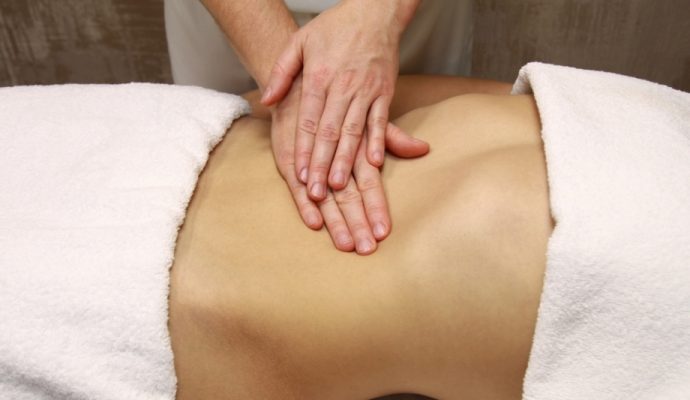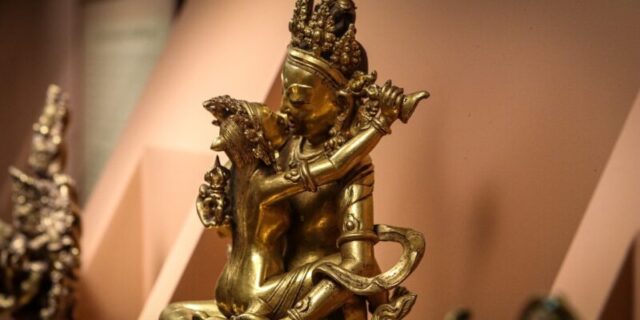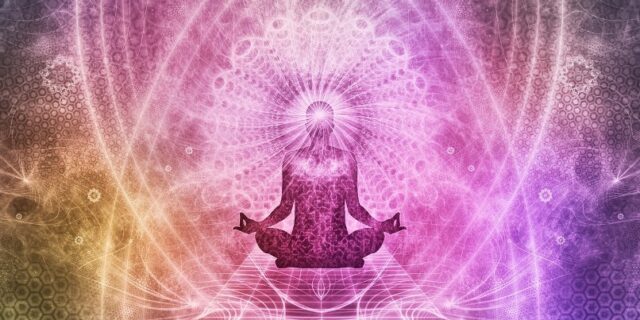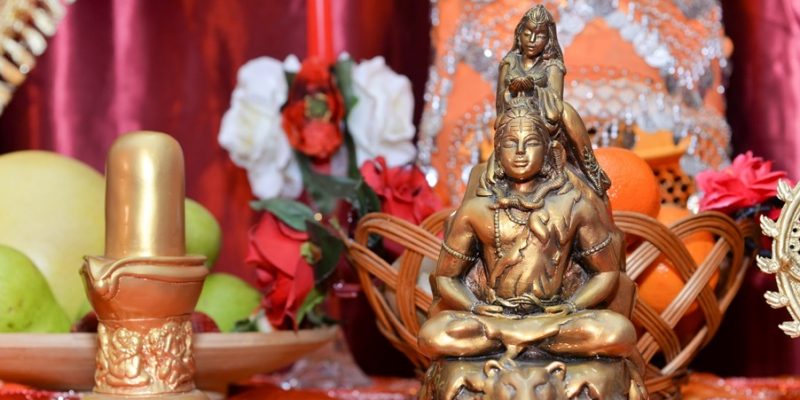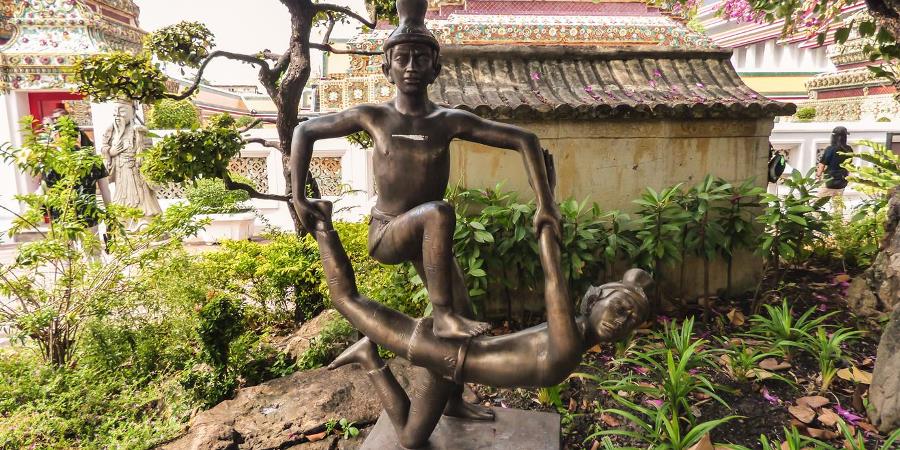
Apart from the Buddhist and Vedic (Ayurvedic) influences on Thai Massage, we also see Chinese Taoist and Indian Tantric spiritual practices reflected in the art. This seems perhaps a contemporary development, but actually it has a long preceding history with important influences that have contributed to what Traditional Thai Massage therapy is today.
To understand the way Chinese Taoism and Indian Tantric ideas have influenced (and are still influencing) the practice of Thai Massage, I’ll first start with briefly explaining Taoism and Tantra. Yet, even if told briefly, it’s still a bit of a story, but without that I think it’s harder to grasp how Taoism and Tantrism intertwine with Thai Massage.
Taoism
Taoism (or Daoism) goes back to the 4th century BC and is both a philosophical and religious tradition of China that focuses on living in harmony with the Tao (or Dao), which means “The Way.” Tao is considered the source, pattern and substance of everything that exists, which has its parallel in Qi (or Prana), the Universal Life Force.
Living the Tao is becoming one with the rhythms of the universe, living by action without intention (Wu Wei) in naturalness, simplicity, spontaneity, compassion, frugality, and humility.
Taoism has had a deep influence on Chinese culture in general and Chinese self-care and healing practices in particular. For instance, Neidan Inner Alchemy, Chinese Astrology, Zen Buddhism, Chinese meditation techniques, many Chinese martial arts, Traditional Chinese Medicine (TCM), Feng Shui, and Qigong have been blended with Taoist ideas and practices throughout history.
Apart from China, Taoism also had influence on surrounding cultures in Asia, for instance, on Korea, Vietnam, Thailand and Japan, and today increasingly intertwines with the Indian Tantra and Western based Neo-Tantra movement.
Tantra and Neo-Tantra
Tantra systems, philosophy, and practices originate in India and became more widely known in the country around 500 CE. What Tantra is exactly remains controversial and somewhat vague, and there are many, many interpretations.

We could say that it’s a system, life art, or methodology, which is part of Indian Hindu spiritual, cosmological, and religious traditions. The scope of topics is vast and Tantra deals in theoretical and practical forms with the evolution and history of the world, male and female Gods and Goddesses, ritual worship, esoteric practices, Kundalini Energy, divination, magic, Yoga, techniques for the purification of body and mind, self-realization and enlightenment, and divine sexuality.
At the end of the 1960s, Tantra practices saw a strong revival in the Western world, which today is usually labeled as the Neo-Tantra Movement. Neo-Tantra practices, like for instance contemporary Tantric Massage, draw from a wide range of techniques containing elements from traditional Indic Tantra philosophy and rituals, Yoga, Bioenergetics, and modern Sexual Therapy, but also using elements from various contemporary massage and bodywork teachers and psychologists such as Wilhelm Reich, Carl Jung, Mantak Chia (the creator of Thai Chi Nei Tsang Massage), Joseph Kramer and Annie Sprinkle, to give some examples.
Intertwining with Thai Massage
Today we know that Thai Traditional Massage came about over a period of almost thousand years as a blend of Indian Ayurvedic, Tibetan, Traditional Chinese Medicine, Mon and Khmer indigenous medicine, integrated with the medicinal knowledge the Thai people brought with them when they gradually entered the region that is now called Thailand.

There are various ways of how the Chinese people, Chinese spiritual ideas, and Chinese Medicine (and subsequently Taoist ideas) have influenced the Thais, the Thai culture, and Thai Traditional Medicine. Not only did the Thai originally inhabited areas of China bringing Chinese knowledge with them, but Chinese concepts, thoughts, and applications can be found in virtually every aspect of daily Thai life, ranging from food, pottery, herbal medicines and recipes, to religion and superstitions, and what not.
Moreover, the Chinese presence in Thailand (more than ten percent of the population) has always been large, notably in Bangkok and Chiang Mai, but actually throughout the whole of Southeast Asia, which, of course, had and has its own impact.
One of the most visual influences of Chinese Medicine on Thai Traditional Medicine is that of the use of traditional Chinese medical diagnostics methods , such as analysis of the iris, the tongue, and pulse, to name some commonly used techniques.
As for massage, Thai Foot Massage is one of the Thai Massage modalities strongly influenced by Chinese Reflexology, and you’ll find a number of massage training schools in Thailand offering Thai Foot Massage and Reflexology training, while at the same time — without a blink of the eyes — mentioning that it’s based on Chinese Reflexology points (like, for instance, the Wat Pho Medical Massage School’s Foot Massage course).
Another famous contemporary example of a Thai-Chinese Taoist massage blend is Chi Nei Tsang (Thai Abdominal Chi Massage), the internal organs massage modality quite recently developed by Master Mantak Chia, which today conquers the world as the abdominal massage treatment modality of excellence. By the way, Chi Nei Tsang’s little sister, Karsai Nei Tsang (Thai Genital Detox Massage), follows the same principals.
Of late, we also see some Thai Massage teachers in the West explicitly taking up and blending Chinese Medicine concepts and Chinese Taoist ideas into Thai Massage.
Tantra on the other hand, or more precise, Tantra Yoga, is considered the origin of traditional Indian Hatha Yoga, and combines a variety of other Yoga styles and methods, such as Kundalini Yoga, Vinyasa, Bhakti, Karma, and Raja Yoga.
Tantra Yoga techniques include the concepts of Prana Life Energy, the Nadis, Marma Points, Kundalini Energy, Chakras, and the use of Yoga asanas, mantras, mudras, bandhas, breath work, chanting, and meditation to promote strength, clarity, and bliss in everyday life and overall physical and moreover, spiritual well-being.
Many of these Tantric practices found their way to Thai Massage as concepts and practices we today know as Sib Sen Energy Lines (Nadis), Lom Pran (Prana), Chakras, and Acupressure Points.
In any case, you can learn more about the historical and contemporary influence of Tantra on Thai Massage in our in-depth article Thai Massage and Tantra | The Missing Link.
Neo-Taoism and Neo-Tantra
In the past decades, we’ve seen an increased interweaving between ancient Chinese Taoist and Indian Tantra practices, notably in the sphere of sexuality and spirituality. What unites Taoism and Tantra is that both consider sexual energy an expression of Life Force (Qi, Prana, or Life Energy), and both practices use sexual energy to increase life force, promote spirituality, better health and longevity.

Another parallel between Chinese Taoism and Indian Tantra is that both philosophies historically have often taken up the role of going against inflexible sexual and social values, which in the case of China was represented by the (anti-female) values of Confucianism and in India by the austere Caste system.
In addition, both Taoist and Tantra practitioners have been experimenting with inner and external alchemy, which were aimed at spiritual self-realization of the individual. Taoism and Tantra have always promoted individual values and goals, in contrast to Confucianism and the Indian Caste system that have always promoted group values.
Today, we see that Neo-Tantra practices converge with Neo-Taoist practices in the form of blends of methods, techniques and treatments such as Multi-Orgasmic practices, Chi Nei Tsang Abdominal Massage, Karsai Nei Tsang Genital Massage, Tantric Massage, Neidan Inner Alchemy, and Sexual Qigong, to name just a few examples.




